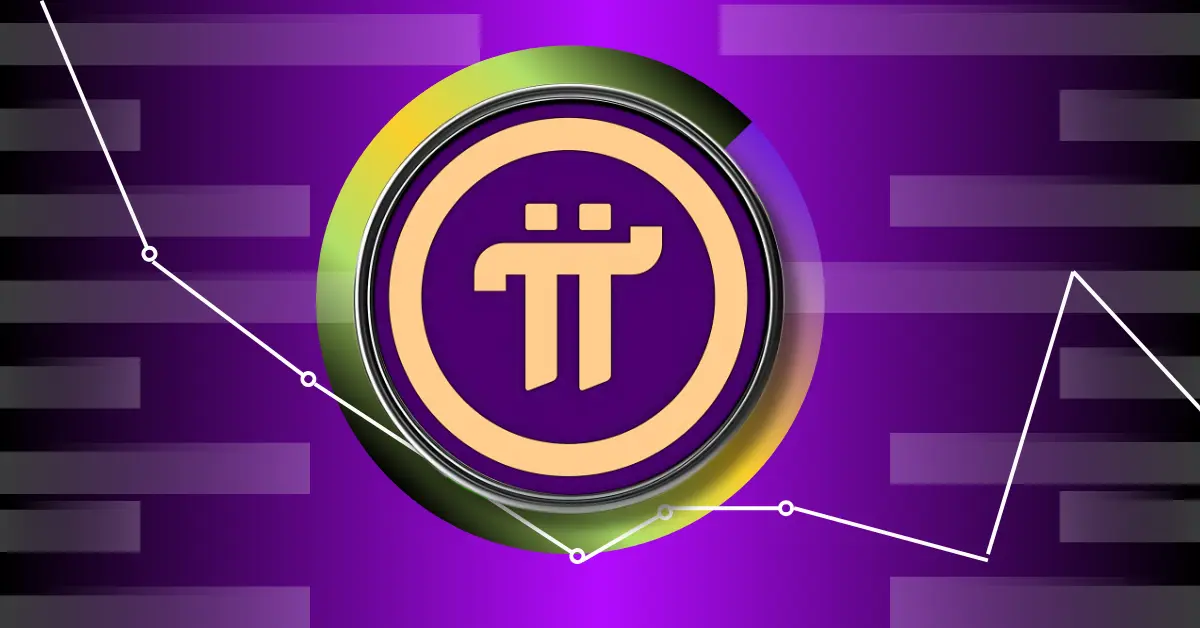Understanding the Dynamics Behind Pi Network’s Price Collapse
Pi Network’s descent from a promising mobile-friendly cryptocurrency to a token experiencing severe price drops reveals a multifaceted story that mirrors the complexities of the broader crypto market. This narrative showcases how external geopolitical tensions, internal structural challenges, shifting market sentiments, and development milestones intertwine to influence its volatility and investor confidence.
The Ripple Effect of Geopolitical Turmoil on Crypto Markets
The recent surge in geopolitical tensions—most notably Israel’s military actions in the volatile Middle East region—has sent shockwaves through global markets. Cryptocurrencies, often characterized by high volatility and perceived as high-risk assets, bear the brunt during such episodes of uncertainty. Bitcoin’s 3.5% drop set the tone, with major altcoins following suit, declining between 6% and 9%. Pi Network’s token suffered an even steeper fall of approximately 13% in a single day, underscoring its sensitivity to macroeconomic disturbances.
This pattern highlights a crucial aspect of investor psychology: during turbulent times with large-scale geopolitical risk, capital rapidly exits volatile sectors. For Pi Network, the sell-off illustrates the fragility of investor confidence, especially given that the project’s core fundamentals are seemingly unaffected by such global events. The broader market context, therefore, plays a decisive role in amplifying or dampening token price movements.
The Hype Cycle: From Breakneck Growth to Inevitable Correction
Before the geopolitical upheaval, Pi Network experienced an extraordinary surge, with its market capitalization skyrocketing from $4.5 billion to $8.8 billion within one week. This rapid ascent largely stemmed from excitement surrounding the launch of its open mainnet and announcements of an elaborate ecosystem, including a $100 million fund aimed at fostering decentralized services and mini-games.
Yet, such meteoric rises often pave the way for steep corrections. The Pi Network price oscillated violently, with swings exceeding 40%, reflecting a classic bubble-like behavior where early optimism and speculative enthusiasm push valuations beyond sustainable levels. The ecosystem fund, while strategically aimed at long-term growth, paradoxically coincided with price declines, suggesting market skepticism about the timing and immediate impact of these initiatives. This scenario demonstrates how investor perception can quickly shift from euphoria to caution when tangible utility does not match hype.
Structural Weaknesses Amplifying Downward Pressure
Delving deeper, Pi Network’s tokenomics and governance frameworks reveal vulnerabilities fueling its price slide. Its token release mechanism—characterized by periodic unlocks releasing billions of tokens into the market—floods supply and inflates sell-side pressure. One unlock of 1.5 billion tokens contributed to price drops approaching 80% from peak levels, a staggering erosion of value indicative of supply shocks.
Furthermore, concerns about centralization and opacity shadow the project. With parallels drawn to troubled entities like Terra Luna, critics argue that insider control and lack of transparency undermine community trust. These issues are compounded by delays in critical mainnet components, notably Know Your Business (KYB) approvals, which impede real-world usage and limit ecosystem maturation. The combination of unlocked supply pressure and governance opacity forms a formidable barrier to stable price recovery.
Community Engagement and Market Sentiment: Signs of Life Amidst Bearish Trends
Interestingly, amid these challenges, Pi Network’s user base has demonstrated pockets of resilience. Domain name auctions with over 200,000 bids indicate enthusiastic community participation and ongoing interaction with the platform’s tools. However, technical indicators like a declining Relative Strength Index (RSI) and persistent resistance levels temper optimism, illustrating that bullish momentum remains elusive.
Market analysts forecast further price decreases, projecting levels near $0.30 before any meaningful rebound. The interplay of soft buying interest, ongoing token unlock events, and negative macroeconomic environments suggests that significant price recovery might be delayed until later in the year. Pi Network’s aspirational promise—backed by a large user base and over 100 decentralized apps (DApps)—has yet to manifest as strong economic activity or reliable demand on exchanges, underscoring the gap between user engagement and market valuation.
Prospects for Revival or Continued Decline
Pi Network’s road ahead hinges on several pivotal factors:
– Decentralization Drive: Transitioning from perceived insider control toward true decentralization could rebuild trust and reduce concerns of manipulation.
– Mainnet Milestones: Accelerating the deployment of critical features like KYB verification and developer tools can enhance practical usability and attract fresh demand.
– Broader Crypto Market Trends: A bullish shift in the global cryptocurrency space would likely buoy sentiment and create favorable conditions for price appreciation.
– Regulatory Clarity: Clear and supportive regulations, especially in dominant markets like the United States, could mitigate speculative fears and encourage institutional participation.
Despite these hopeful triggers, the project faces an uphill battle addressing governance transparency, tokenomics stability, and user retention in a market increasingly wary of hype-driven ventures.
At a Crossroads: Balancing Promise Against Challenges
Pi Network exemplifies the precarious journey of emerging cryptocurrencies striving to transition from speculative phenomena into durable platforms. Its recent steep price corrections—from sharp geopolitical-driven slips of 13% to near 80% crashes linked to token unlocks—illustrate the intense vulnerabilities embedded in burgeoning crypto projects. While the community foundation remains robust and ecosystem initiatives show promise, actualizing sustainable growth demands tangible decentralization, functional utility, and adept navigation of volatile market forces.
The narrative ahead resembles a delicate balancing act between optimism and realism. For investors and community members, Pi’s progression will be a telling case of whether early enthusiasm can mature into enduring value or dissolve under the weight of structural and environmental pressures. This ongoing saga underscores the intricate dance between innovation, speculation, and external shocks within the ever-evolving cryptocurrency arena.

